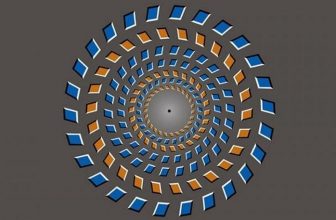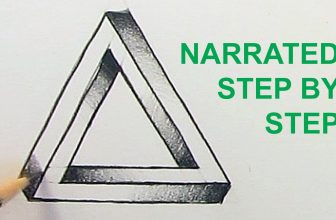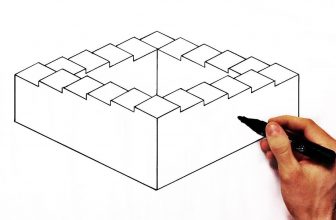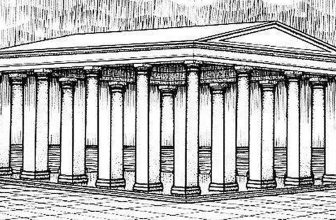There is a delay of about one 10th of a second between the moment we “see” something, and the time when we actually visualize that something; due to brain processing time. A simple experiment, invented by vision scientist Romi Nijhawan in the 1990s, called the Flash-Gap Experiment, allows us to visualize the built-in brain processing delay.
In our version of the Flash-Lag Experiment above there are 2 rectangles rotating about a horizontal line. Each time the rectangles are parallel to the line a flash goes off on either end of the line. If there were no delay between sight and realization the flash and rectangles should line up precisely when we see them at the same time; but they don’t. The rectangles tend to rotate slightly beyond the flash when it goes off; you can see the line through the rectangles.
How to look at the Experiment: It helps to keep your eye on the points where either of the 2 flashes appear. Where is the rectangle when you “see” a flash?
Here is how it works: The brain can easily track the circular path of the rectangles and “project” their positions into the future by one 10th of a second. This is how the brain allows us to see in the present; where the rectangles would be in the next 10th of a second – our current now. The brain cannot project a path for the flash because it is not moving, and unpredictable. We see the rectangles in our current now, and the flashes lag behind by one 10th of a second.
For more information about this effect:
The Vision Revolution by Dr. Mark Changizi
Motion Integration and Postdiction in Visual Awareness
Teacher Notes: There are two additional illusions which you can discuss One; the large rectangles and the black line create an illusion of transparency. Are the rectangles transparent and on top of the line, or solid and behind the line? The answer is; it can be either. The brain is happy to oblige in either case. Two; if you look at the space between the two large rectangles you may see a light pinkish circle. This is an illusion of contrast. There is more red surrounding this area as the rectangles rotate, and the red color “bleeds” into the open space between. The rectangles create an imaginary border to contain the pinkish illusion.





